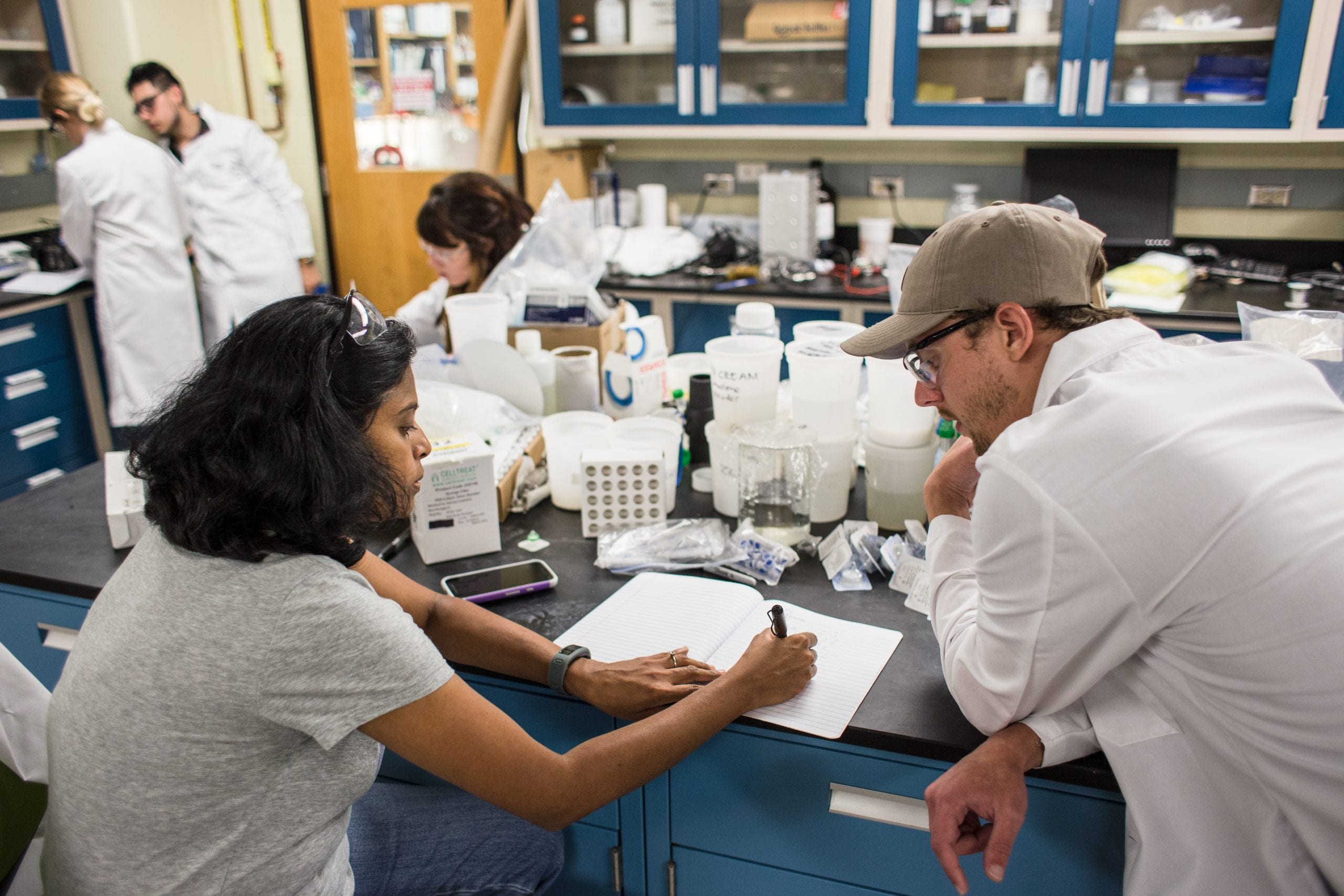Many scientists agree that their love for scientific research began with their undergraduate research experiences. To fulfill the need for 1 million more STEM majors by 2020, university STEM programs are faced with the task of providing the multitude of students entering their programs with unique undergraduate research experiences. The demand for these transformative research experiences keeps growing, but how can we increase the supply?
What is the CURE? Ramping Up from 1:1 to 1:Many
CUREs, or course-based undergraduate research experiences, directly address the limited supply of research experiences available to STEM undergraduate students by simultaneously increasing the number of students involved in research while reducing the burden on faculty to mentor students one-on-one.

So what makes a CURE different from the typical apprenticeship model where an expert researcher mentors a novice researcher one-on-one? The goals of a CURE are similar to the goals of the apprenticeship model. Specifically, they provide students the opportunity to:
- contribute to original research relevant to the broader public
- formulate hypotheses
- investigate research questions with unknown results (no cookbook labs here!), and
- communicate the results of this iterative process of research to the broader public through #scicomm
However, CUREs are distinct from the apprenticeship model in that students work together collaboratively and iteratively alongside a faculty mentor during a designated class time. This means the CURE is experienced by multiple students, even an entire course full of students, at the same time. With this structure, one instructor can mentor many students at once, and the time invested by students is in class rather than outside of class. Additionally, by being on a university's course list, CUREs are offered to a broader range of students rather than to just those who self-select to enter the apprenticeship model.
What makes CUREs effective?
CUREs have been successfully implemented in a variety of contexts, and their effectiveness has been demonstrated repeatedly. CUREs increase graduation rates and the completion of STEM degrees. There is also evidence that CUREs result in strong motivational and learning gains for students who experience them.
So what aspects of these experiences make them so meaningful and effective? The answer still isn't entirely clear, but researchers have some hypotheses about why these CUREs are so impactful. First, because CUREs occur during dedicated class time, they may reduce the stress of balancing research and a full course load for students. Additionally, moving research experiences into required coursework may mitigate some barriers to research experiences, making research more inclusive. Second, CUREs can provide more of an opportunity for students to develop a sense of ownership over their projects, which may be a possible contributor to persistence in STEM. Lastly, since CUREs can be offered as introductory-level courses, compared to research internships that often occur later in an undergraduate's career, they may have the ability to influence students' career paths earlier on. While the outcomes of certain CUREs are well-studied, more research is needed to tease apart the specific aspects of these experiences that make them so impactful.
Want more?
Has this cure for the growing demand of STEM undergraduate research opportunities piqued your interest? If so, be sure to attend the next Athens Science Café at Little Kings Shuffle Club on Thursday, December 13th at 7pm. UGA's Dr. Erin Dolan will be there to discuss this novel approach to providing mentorship and research experiences for all undergraduate students.

About the author:
 |
Stephanie M. Halmo is a former middle school science teacher turned graduate student, actively pursuing her Ph.D. in biochemistry from the University of Georgia. Stephanie currently serves as an Assistant Editor for Athens Science Observer. In her spare time she likes to dance, volunteer at local schools and tie-dye anything she can get her hands on. She is currently ASO’s News Editor. You can connect with Stephanie on Twitter and Instagram @shalmo or by email: shalmo27@uga. More from Stephanie M. Halmo. |
About the Author
- athenssciencecafehttps://athensscienceobserver.com/author/athenssciencecafe/April 17, 2020
- athenssciencecafehttps://athensscienceobserver.com/author/athenssciencecafe/April 12, 2020
- athenssciencecafehttps://athensscienceobserver.com/author/athenssciencecafe/April 3, 2020
- athenssciencecafehttps://athensscienceobserver.com/author/athenssciencecafe/March 30, 2020







